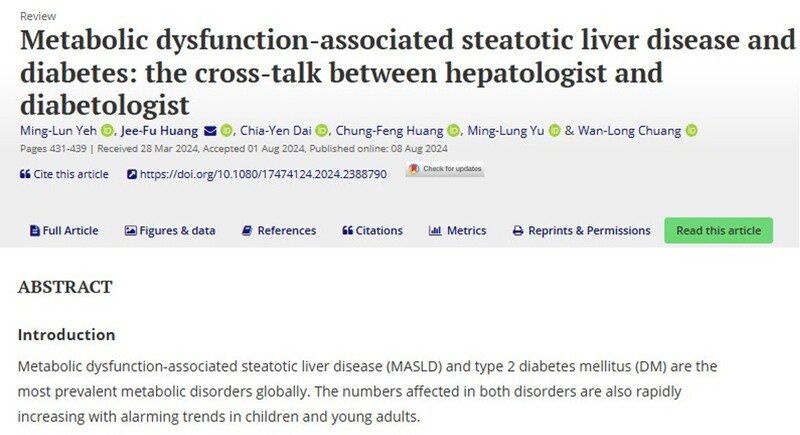Metabolic dysfunction-associated steatotic liver disease and diabetes: the cross-talk between hepatologist and diabetologist

Metabolic dysfunction-associated steatotic liver disease (MASLD) and type 2 diabetes mellitus (DM) are two of the most common metabolic disorders, with both conditions increasingly affecting younger populations. These disorders share a common underlying mechanism in insulin resistance, leading to a bidirectional relationship that influences each other’s progression and prognosis.
DM accelerates the progression of MASLD, raising the risks of hepatocellular carcinoma (HCC) and atherosclerotic cardiovascular disease (ASCVD). Conversely, MASLD exacerbates insulin resistance, increasing the likelihood of developing DM, with the resolution of MASLD reducing this risk.
Given the interconnected nature of these conditions, it is crucial to screen MASLD patients for DM and vice versa. Additionally, DM patients should be referred to hepatologists when signs of advanced fibrosis, cirrhosis, or high HCC risk are present, while MASLD patients should be referred to diabetologists when necessary. A multidisciplinary approach that includes lifestyle modifications is recommended for effectively managing patients with both MASLD and DM.
This comprehensive review highlights the need for awareness, effective screening, risk stratification, and collaborative management strategies to improve patient outcomes. (Link)
Reference: Yeh, M. L., Huang, J. F., Dai, C. Y., Huang, C. F., Yu, M. L., & Chuang, W. L. (2024). Metabolic dysfunction-associated steatotic liver disease and diabetes: the cross-talk between hepatologist and diabetologist. Expert Review of Gastroenterology & Hepatology, 18(8), 431-439.

 r of Excellence for Metabolic Associated Fatty Liver
r of Excellence for Metabolic Associated Fatty Liver